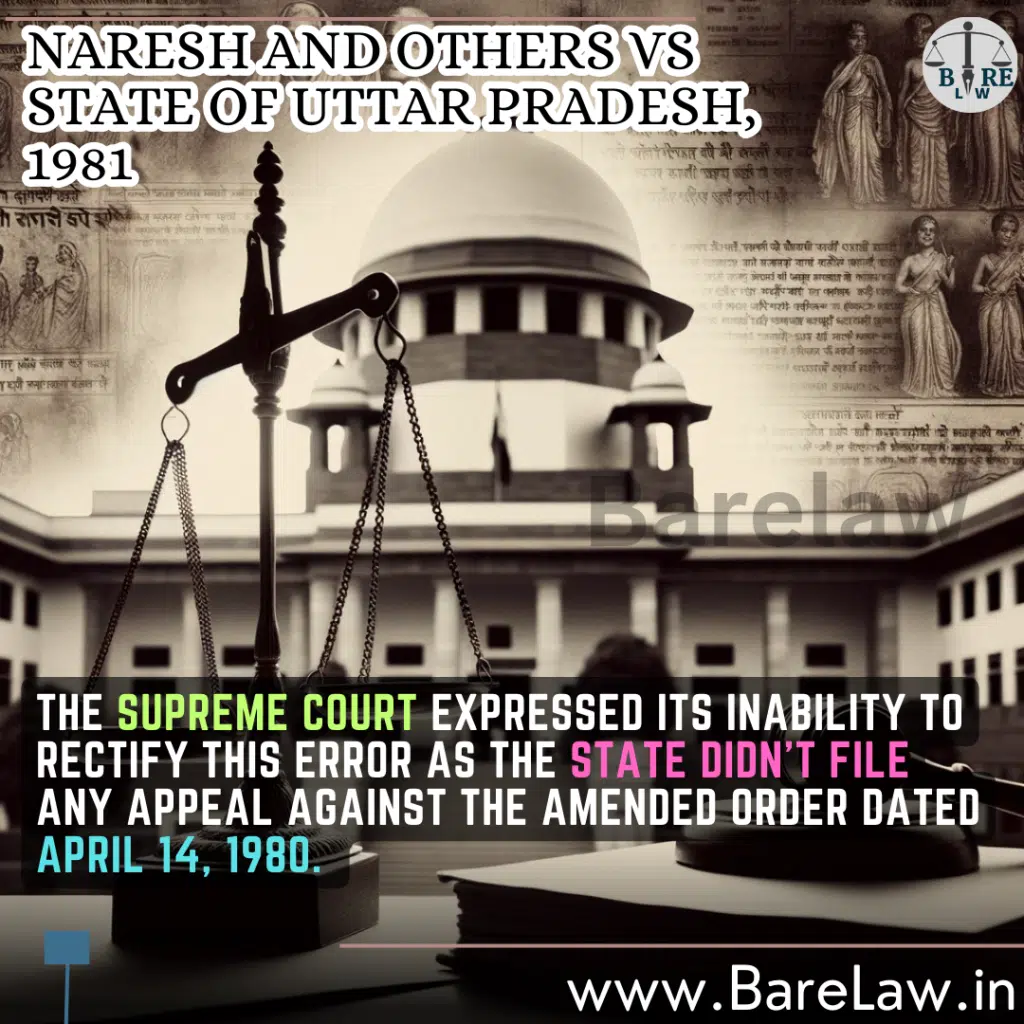
Introduction: Case of Naresh and Others Vs State of Uttar Pradesh, 1981
The Indian judiciary, revered for its meticulous examination and interpretation of legal matters, has witnessed numerous intriguing cases over the years. One such case that sheds light on the court’s operational nuances is the case of Naresh and Others Vs State of Uttar Pradesh, dated April 24, 1981.
Background:
The crux of this case revolves around a significant amendment made by the High Court in its judgment, post the pronouncement.
Initially, Naresh, one of the appellants, was convicted under Section 302 of the Indian Penal Code (IPC), which pertains to punishment for murder, by the Trial Court.
The High Court, upon appeal, affirmed this conviction. However, in a surprising turn of events, the High Court later altered the conviction to one under Section 304 IPC, which deals with culpable homicide not amounting to murder, citing a clerical error as the reason behind this amendment.
Supreme Court’s Stance:
The alteration of judgment drew sharp criticism from the Supreme Court bench comprising A Sen, B Islam, and O C Reddy.
They voiced their “grave concern” and “serious displeasure” at the sequence of events that unfolded at the High Court.
According to the apex court, the High Court, in making such an amendment, overlooked Section 362 of the Criminal Procedure Code, 1973, which restricts the courts from altering or reviewing a judgment or final order, except to correct a clerical or arithmetical error.
Critical Analysis:
The bench found it bewildering that despite clear evidence and a categorical finding about Naresh’s intent to kill, which was a critical determinant for the conviction under Section 302 IPC, the High Court chose to amend the judgment on the premise of correcting a clerical error.
The Supreme Court held that there was no clerical error to begin with, and the amendment was in stark contravention to the provisions of Section 362 CrPC.
Conclusion:
The Supreme Court expressed its inability to rectify this error as the State didn’t file any appeal against the amended order dated April 14, 1980.
However, the case serves as an emblematic instance spotlighting the imperative for judicial prudence to uphold the sanctity of legal proceedings and ensure justice.
This case underscores the significant impact that judicial interpretations and actions can have on the justice delivery system. It also accentuates the necessity for adherence to procedural norms to maintain the integrity and credibility of judicial verdicts.



